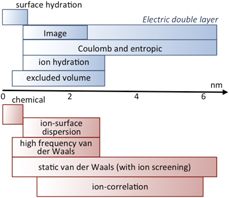Crossref Citations
This article has been cited by the following publications. This list is generated based on data provided by
Crossref.
Fedorov, P. P.
and
Osiko, V. V.
2019.
Relationship between the Faceting of Crystals and Their Formation Mechanism.
Doklady Physics,
Vol. 64,
Issue. 9,
p.
353.
Fedorov, P.P.
and
Alexandrov, A.A.
2019.
Synthesis of inorganic fluorides in molten salt fluxes and ionic liquid mediums.
Journal of Fluorine Chemistry,
Vol. 227,
Issue. ,
p.
109374.
Zhang, Xin
Zhang, Xianwen
and
Wang, Chongmin
2019.
Building advanced materials via particle aggregation and molecular self-assembly.
Journal of Materials Research,
Vol. 34,
Issue. 17,
p.
2911.
2020.
Crystallization via Nonclassical Pathways Volume 1: Nucleation, Assembly, Observation & Application.
Vol. 1358,
Issue. ,
Che Lah, Nurul Akmal
Kamaruzaman, Aqilah
and
Trigueros, Sonia
2020.
pH-Dependent Formation of Oriented Zinc Oxide Nanostructures in the Presence of Tannic Acid.
Nanomaterials,
Vol. 11,
Issue. 1,
p.
34.
Qin, Zhiguo
Chen, Bo
Mao, Yu
Shi, Chu
Li, Yan
Huang, Xiao
Yang, Fang
and
Gu, Ning
2020.
Achieving Ultrasmall Prussian Blue Nanoparticles as High-Performance Biomedical Agents with Multifunctions.
ACS Applied Materials & Interfaces,
Vol. 12,
Issue. 51,
p.
57382.
Moreira, Mario L.
Bordin, José Rafael
Andrés, Juan
Varela, José A.
and
Longo, Elson
2020.
A description of the formation and growth processes of CaTiO3mesocrystals: a joint experimental and theoretical approach.
Molecular Systems Design & Engineering,
Vol. 5,
Issue. 7,
p.
1255.
Sushko, Maria L.
2020.
Crystallization via Nonclassical Pathways Volume 1: Nucleation, Assembly, Observation & Application.
Vol. 1358,
Issue. ,
p.
97.
Gryboś, Joanna
Hudy, Camillo
Gryczynska, Angelika
Piskorz, Witold
and
Sojka, Zbigniew
2020.
Hydrothermal Synthesis of Euhedral Co3O4 Nanocrystals via Nutrient-Assisted Topotactic Transformation of the Layered Co(OH)2 Precursor under Anoxic Conditions: Insights into Intricate Routes Leading to Spinel Phase Development and Shape Perfection.
Crystal Growth & Design,
Vol. 20,
Issue. 12,
p.
7771.
Kerisit, Sebastien N.
and
De Yoreo, James J.
2020.
Effect of Hydrophilicity and Interfacial Water Structure on Particle Attachment.
The Journal of Physical Chemistry C,
Vol. 124,
Issue. 9,
p.
5480.
Salzmann, Bastiaan B. V.
van der Sluijs, Maaike M.
Soligno, Giuseppe
and
Vanmaekelbergh, Daniel
2021.
Oriented Attachment: From Natural Crystal Growth to a Materials Engineering Tool.
Accounts of Chemical Research,
Vol. 54,
Issue. 4,
p.
787.
Su, Shaoqiang
Siretanu, Igor
van den Ende, Dirk
Mei, Bastian
Mul, Guido
and
Mugele, Frieder
2021.
Facet‐Dependent Surface Charge and Hydration of Semiconducting Nanoparticles at Variable pH.
Advanced Materials,
Vol. 33,
Issue. 52,
Pinatti, Ivo M.
Trench, Aline B.
Tello, Ana C. M.
Pereira, Paula F. S.
Souza, Josiane C.
Teodoro, Marcio D.
Rosa, Ieda L. V.
Andrés, Juan
Longo, Elson
and
Simões, Alexandre Z.
2021.
Structure, Photoluminescence Emissions, and Photocatalytic Activity of Ag2SeO3: A Joint Experimental and Theoretical Investigation.
Inorganic Chemistry,
Vol. 60,
Issue. 8,
p.
5937.
Xing, Yi
and
Jiang, Wenge
2021.
Crystallization via Nonclassical Pathways Volume 2: Aggregation, Biomineralization, Imaging & Application.
Vol. 1383,
Issue. ,
p.
105.
Xi, Yuming
and
Lu, Yangcheng
2021.
Interpretation on a Nonclassical Crystallization Route of Prussian White Nanocrystal Preparation.
Crystal Growth & Design,
Vol. 21,
Issue. 2,
p.
1086.
Mukherjee, Sumit
Pramanik, Subhamay
Das, Sandip
Chakraborty, Subhabrata
Mondal, Shyamal
Ghosh, Tatan
Nath, Rajib
and
Kuiri, Probodh K.
2021.
Oriented attachment induced morphology modulation of ZnO nanoparticles at low temperature using KOH as a morphology controller.
New Journal of Chemistry,
Vol. 45,
Issue. 36,
p.
17009.
Sushko, Maria L.
2022.
Crystallization pathways and interfacial drivers for the formation of hierarchical architectures.
Journal of Crystal Growth,
Vol. 600,
Issue. ,
p.
126914.
Yasui, Kyuichi
2022.
Merits and Demerits of ODE Modeling of Physicochemical Systems for Numerical Simulations.
Molecules,
Vol. 27,
Issue. 18,
p.
5860.
Wang, Yining
Xue, Sichuang
Lin, Qingyun
Song, Duo
He, Yang
Liu, Lili
Zhou, Jianbin
Zong, Meirong
De Yoreo, James J.
Zhu, Junwu
Rosso, Kevin M.
Sushko, Maria L.
and
Zhang, Xin
2022.
Particle-based hematite crystallization is invariant to initial particle morphology.
Proceedings of the National Academy of Sciences,
Vol. 119,
Issue. 11,
Hu, Pengfei
Zhou, Dong
Xu, Shiqing
Ma, Qianru
Yin, Jiaqi
Cao, Yali
and
Xu, Jing
2022.
Aqueous phase- and size-controlled synthesis, and secondary assemblies of CdS nanocrystals at room temperature.
CrystEngComm,
Vol. 24,
Issue. 1,
p.
43.



